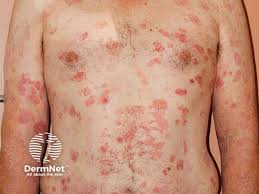Soligenix, Inc. has completed the planned enrollment of 50 patients necessary for the interim analysis in its 80-patient confirmatory Phase 3 double-blind, placebo-controlled study evaluating synthetic hypericin (HyBryte) in the treatment of cutaneous T-cell lymphoma (CTCL).
The planned interim analysis is slated to occur in the second quarter of 2026, Soligenix reports.
HyBryte is a novel, first-in-class, photodynamic therapy utilizing safe, visible light for activation. The active ingredient is synthetic hypericin, a potent photosensitizer that is topically applied to skin lesions that is taken up by the malignant T-cells, and then activated by safe, visible light approximately 24 hours later,
The confirmatory Phase 3 study (Fluorescent Light Activated Synthetic Hypericin 2, FLASH2), builds on the previous statistically significant Phase 3 (FLASH) study, as well as a recent successful comparative study (HPN-CTCL-04) and an ongoing investigator-initiated study.
FLASH2 is a randomized, double-blind, placebo-controlled, multicenter study that is enrolling approximately 80 subjects with early-stage CTCL. The study Data Monitoring Committee (DMC) is empowered to conduct one formal Interim Analysis when approximately 60% (n = 48) of the total patients have completed the primary endpoint evaluation (i.e., Week 18 or before). The study replicates the double-blind, placebo-controlled design used in the first successful Phase 3 FLASH study that consisted of three six-week treatment cycles (18 weeks total), with the primary efficacy assessment occurring at the end of the initial six-week double-blind, placebo-controlled treatment cycle (Cycle 1). However, this second study extends the double-blind, placebo-controlled assessment to 18 weeks of continuous treatment (no “between-Cycle” treatment breaks) with the primary endpoint assessment occurring at the end of the 18-week time point.
In the first Phase 3 study, a treatment response of 49% was observed in patients completing 18 weeks (three cycles) of therapy. In this second study, all important clinical study design components remain the same as in the first FLASH study, including the primary endpoint and key inclusion-exclusion criteria. The extended treatment for a continuous 18 weeks in a single cycle is expected to statistically demonstrate the effect of HyBryte over a more prolonged, “real-world” treatment course.
“The findings so far are consistent with the ongoing open-label, investigator-initiated study being conducted at my institution where HyBryte has demonstrated a response rate of 75% after 18 weeks of treatment,” adds Ellen Kim, MD, Director of the Penn Cutaneous Lymphoma Program and Vice Chair of Clinical Operations in the Dermatology Department and a Professor of Dermatology at the Hospital of the University of Pennsylvania in Philadelphia, PA, and Lead Investigator of the FLASH2 study. “The benign safety profile we observed in the first FLASH study, as well as in the ongoing investigator-initiated study, continues to be observed in FLASH2, as evidenced by the recently achieved safety review milestone.”
PHOTO CREDIT: DermNet


